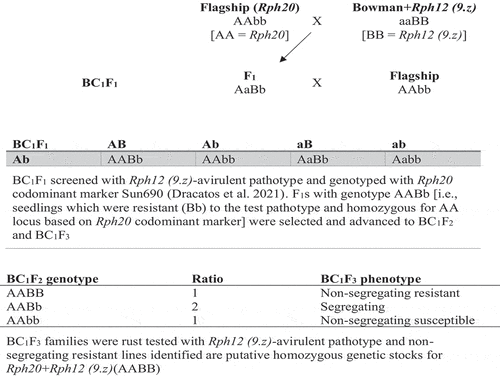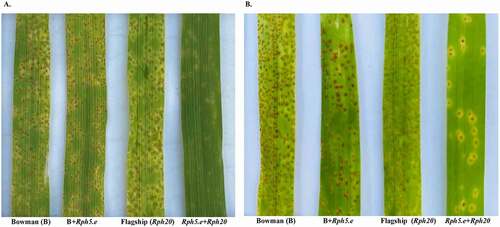Figures & data
Table 1. List of barley ‘Bowman’ near-isogenic lines (NILs)* and genotypes screened for response to Puccinia hordei at three different temperature regimes in the greenhouse
Fig. 1 Schematic development of Rph12 (9.z) and Rph20 gene combination stocks. Other Rph combinations were developed in this study using the same genetic model

Table 2. Responses of barley near-isogenic lines (NILs) against pathotypes 200 P− and 5457 P+ of Puccinia hordei at three post-inoculation temperatures in the greenhouse under natural lighting
Table 3. Frequency of segregation (HR, Seg and HS)* observed among BCnF3 families of barley for each gene combination when inoculated with pathotypes 200 P− or 5457 P+ of Puccinia hordei.
Table 4. Infection type (IT) response of barley parents and gene combinations using avirulent pathotypes (200 P− or 5457 P+) of Puccinia hordei.
Fig. 2 (Colour online) Rph5.e+Rph20 combination lines of barley showing improved resistance in contrast to parental line Bowman+Rph5.e and ‘Flagship’ (Rph20) when tested with avirulent pathotype 5457P+ (A) and virulent pathotype 220 P+ +Rph13 (B) of Puccinia hordei. ‘Bowman’ was used as a susceptible control

